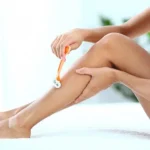Helix piercings have become increasingly popular in recent years, but what is helix piercing? And how do you properly care for them?
In this comprehensive article, we’ll delve into the world of helix piercings, exploring what they are, the different variations available, and essential tips for ensuring their proper care and maintenance.
Whether you’re considering getting a helix piercing or already have one and want to learn how to keep it looking and feeling its best, this guide has got you covered.
Get ready to discover everything you need to know about helix piercings and how to take care of them like a pro.

What is Helix Piercing?
A helix piercing is a type of ear piercing situated along the upper cartilage of the ear, specifically on the outer rim known as the helix.
Unlike lobe piercings, which go through the soft, fleshy part of the ear, helix piercings pass through the tougher cartilage, making them a bit more complex and sometimes more painful to heal.
There are several variations of helix piercings to consider, such as the standard helix, forward helix (closer to the face), and even double or triple helix piercings, where multiple piercings are aligned along the helix.
These piercings offer a versatile and stylish look, allowing for a wide range of jewelry options, from simple studs to eye-catching hoops and barbells.
Given the density of the cartilage, helix piercings typically take longer to heal than lobe piercings, often requiring several months of careful aftercare to prevent infection and ensure proper healing.
Despite the extra effort, the unique placement and aesthetic appeal of helix piercings make them a popular choice for those looking to add a distinctive touch to their ear adornments.
How painful is Helix Piercing?

The pain level of a helix piercing can vary from person to person, but generally, it is considered to be moderately painful.
Since helix piercings go through the harder cartilage of the ear, rather than the softer lobe tissue, they tend to be more painful than lobe piercings.
Here’s what you can typically expect:
- Initial Pain: During the actual piercing process, you will likely feel a sharp, quick pain as the needle passes through the cartilage. This sensation usually lasts only a few seconds.
- Immediate Aftermath: Following the piercing, you might experience a throbbing or aching sensation in the ear for a few hours. This initial soreness can be managed with over-the-counter pain relief if necessary.
- Healing Period: The pain usually subsides significantly after the first few days, but the ear can remain sensitive for several weeks. The healing process for cartilage piercings can take several months, during which the area might still feel tender, especially if bumped or touched.
- Individual Factors: Pain tolerance varies widely among individuals, so what feels moderately painful to one person might be more or less painful to another. Factors such as the skill of the piercer and your overall health and stress levels can also affect your experience.
Most people find the pain of a helix piercing to be manageable and well worth the unique and stylish look it offers.
Proper aftercare, including cleaning the piercing regularly and avoiding unnecessary trauma to the area, can help minimize discomfort and ensure a smooth healing process.
How to take care of a piercing?
Properly caring for a helix piercing is essential to ensure it heals well and to prevent complications like infections. Here are some friendly tips for aftercare:
- Clean Regularly: Clean your piercing twice a day with a saline solution or piercing aftercare spray. You can make your own saline solution by dissolving 1/4 teaspoon of non-iodized sea salt in a cup of warm distilled water. Avoid alcohol or hydrogen peroxide, as they can be too harsh and slow down the healing process.
- Hands Off: Try not to touch or twist the jewelry unless you’re cleaning it. Touching the piercing with unwashed hands can introduce bacteria and lead to infection.
- Gentle Cleaning: Use a clean cotton swab or gauze soaked in the saline solution to gently clean around the piercing. Be careful not to move the jewelry too much.
- Avoid Irritants: Keep hair, hats, and headphones away from the piercing to prevent irritation and potential infection. Be cautious when sleeping, and try to avoid sleeping on the pierced side.
- Shower Care: Let warm water run over the piercing during showers to help rinse it, but avoid using harsh soaps or shampoos directly on the area.
- Stay Dry: Avoid swimming pools, hot tubs, lakes, and other bodies of water until the piercing is fully healed, as these can harbor bacteria.
- Be Patient: Healing times for helix piercings can vary, typically taking anywhere from 6 months to a year. It’s important to maintain your cleaning routine throughout this period.
- Watch for Infection: Keep an eye out for signs of infection, such as increased redness, swelling, pain, or yellow/green discharge. If you notice any of these symptoms, contact a healthcare professional.
- Wait to Change Jewelry: Don’t change the jewelry until the piercing is fully healed. If you need to change it, consult your piercer to ensure it’s safe to do so.
- Healthy Habits: Support the healing process by maintaining a healthy lifestyle. Eat well, stay hydrated, and get plenty of rest.
To Conclude
Taking proper care of your helix piercing is essential for a smooth healing process and avoiding complications.
By following these steps and being mindful of your piercing’s needs, you’ll enjoy the unique and stylish look of your helix piercing for years to come.
Remember, patience and consistency are key. With a little TLC, your piercing will heal beautifully, allowing you to showcase your personal style with confidence. Happy healing!


